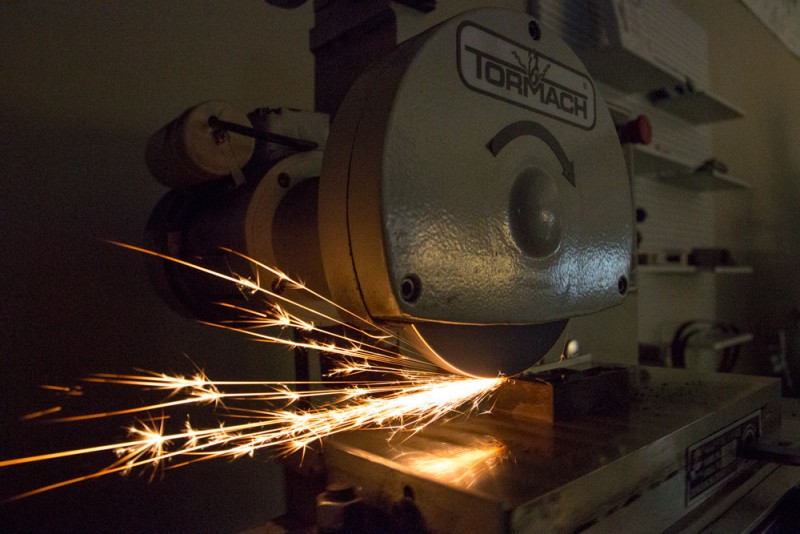Surface grinding has an important role in the metalworking shop. Whether you’re looking to keep tight tolerances or improve appearance, a surface grinder is an essential tool for part finishing.
The Value of Automation
Grinding a part consists of taking a tiny amount of material off in a series of consistent passes to create a smoother surface – often referred to as dusting the part. The Z height is set and the table is moved in on of various patterns along the X and Y axes until the entire part has been dusted. The back-and-forth of this process can be done manually with rotating handles, but this is often a long and tedious process. This is why automation is an important aspect to keep in mind when debating a surface grinder. While the process of grinding is not complicated, the ability to hit go and walk away is apparent after just one cycle. With four different automated patterns, Tormach’s PSG 612 provides this automation in a small footprint. 
Why Grind?
While using cutting tools like the TTS SuperFly Cutter help get a high-quality finish on a part, the smoothness of that surface can still be improved with a grinder. Depending on the type of part you’re creating, a grinder can be used to not only get mirror finishes, but it is vital to get extremely accurate and/or parallel edges on parts. For instance, the Tormach 1-2-3 Block lists that it is accurate and square to 0.0002”/inch – this accuracy can only be reached with a surface grinder or an extremely expensive mill. Grinding metal can be a long and arduous process, but automating the process can help you get more accurate parts, faster. Check out the Tormach PSG 612 Surface Grinder here.


